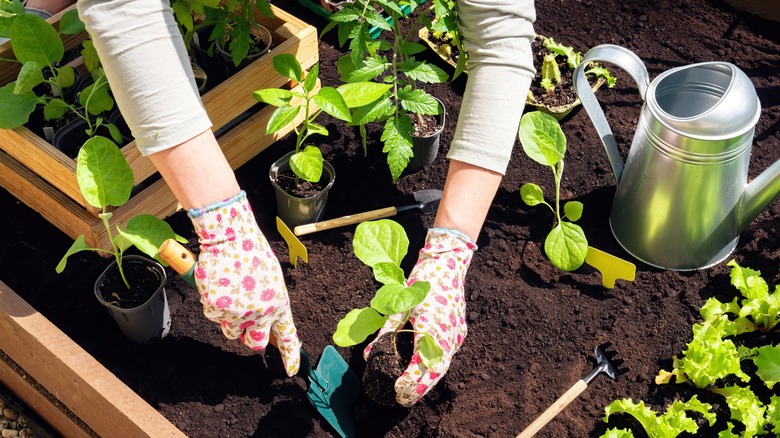Tomatoes are without a doubt a garden favorite. This plump, juicy red fruit also serves as one of the most versatile foods in the kitchen, so it’s no surprise gardeners always keep them around. Tomatoes are some of the easiest plants to grow in the garden, but that doesn’t mean they don’t have their fair share of rules and requirements. These plants need a lot of sunlight, slightly-acidic soil with a pH that’s less than 6.8, and enough water. In addition to their basic needs, tomatoes also benefit from mulching. Mulching is the practice of covering the topsoil with organic or inorganic materials to harness a variety of benefits. However, if you’re in a pinch, you can swap out traditional gardening mulch for this cool hack using just cardboard to cover the area around your tomato plants.
Tomatoes need a lot of extra care to prevent them from falling prey to weeds. They also need a lot of moisture and well-drained soil. The beauty of mulching is that, since it involves covering the topsoil, the weed seeds are less likely to thrive because they too require sunlight to grow. By suppressing their entrance into the world above, you’re helping the tomatoes. Likewise, mulching also enables the soil to hold in moisture for longer, providing your plant with enough available water. You can easily substitute organic mulch for cardboard, which may save you money.
Cut holes in the cardboard and place it around the seedlings

Covering the space around your tomato plants with a piece of cardboard is a great way to keep them healthy. This method is the most helpful when you’re still at the planting stage because weeding tomato plants while they’re grown can damage their roots. This will protect your plants all the way from when they’re planted as seedlings until they’re fully grown. For the cardboard mulch, you will need to use plain cardboard, preferably a piece with ridges.
Measure out the spacing of the tomato plants and mark it out on the cardboard. Then, cut a big-enough hole in each space depending on the projected width of the variety of tomato you’re planting. The seedling should give you a decent estimate, but a 4-inch diameter is typically ideal. This hole is where the seedling will pop through as it’s growing. Plant the tomatoes, then place the cardboard on top of them, put heavy rocks on the edges, and water your plants at the base. The cardboard should be resting on the soil around each tomato seedling. Once the cardboard has done its work and the tomato plants are finished producing, you can simply lift the pieces off of the soil and throw them away.



